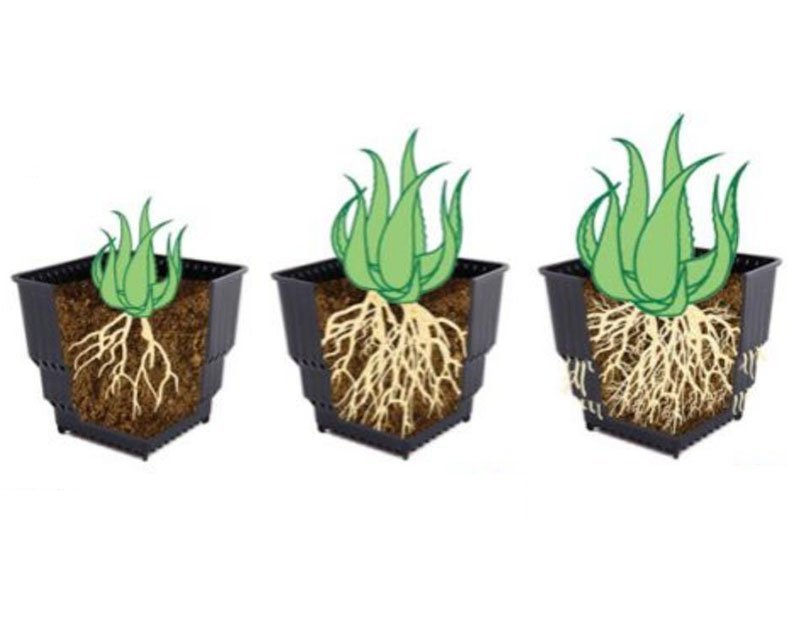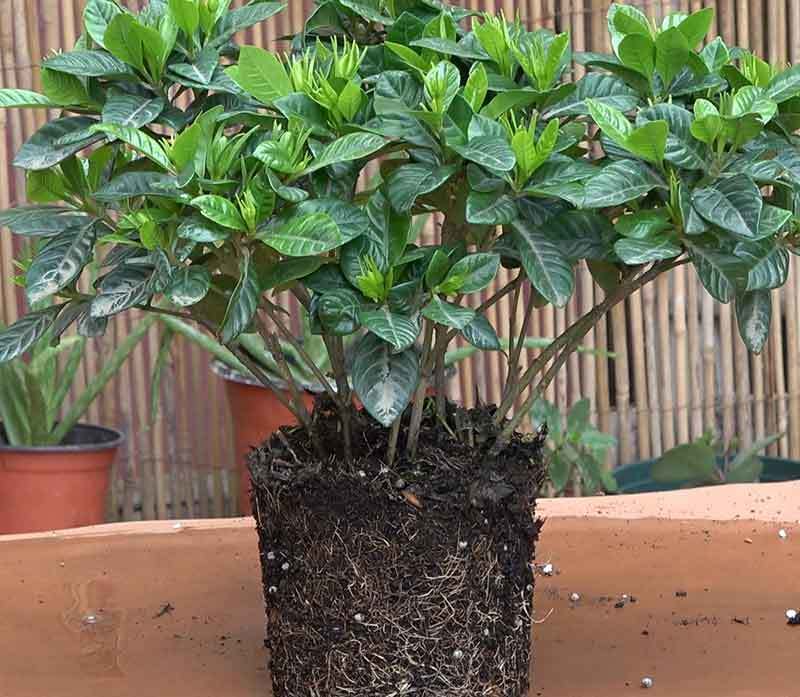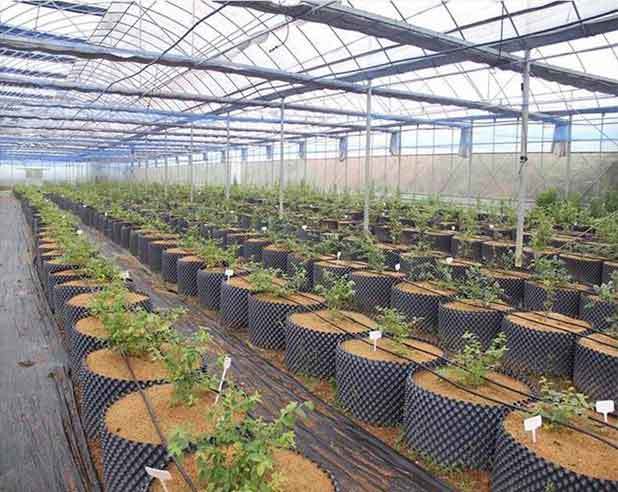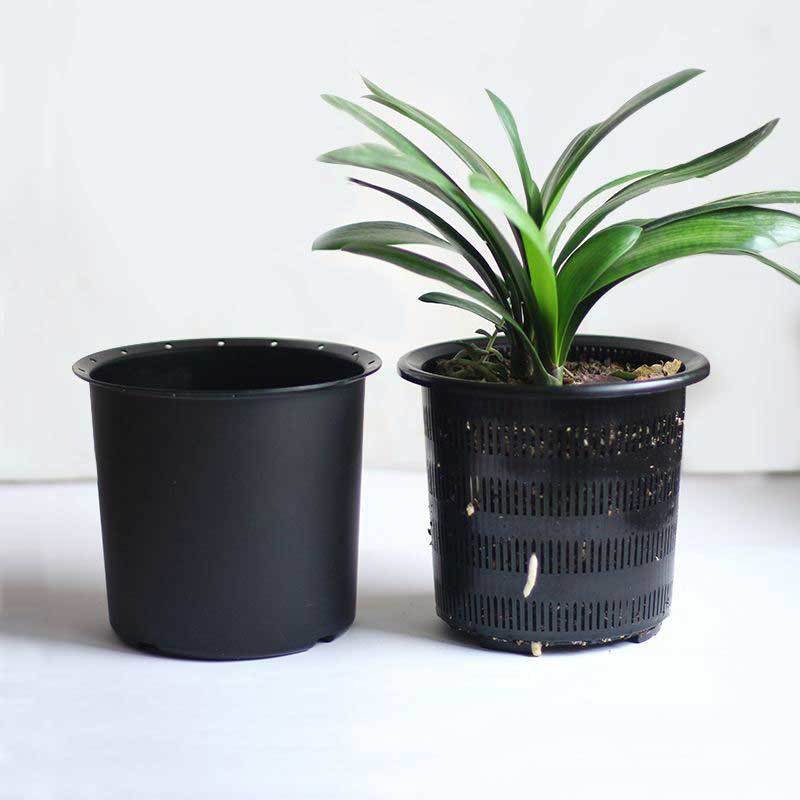What is Air Pruning and How it Works: The Ultimate Guide
Introduction
Healthy root systems are essential to the health of any plant. The roots absorb water and nutrients from the soil. This can help the plant to grow strong and healthy. Without a healthy network of roots, a plant’s growth can be stunted or even stopped altogether. That’s why it’s so important to create the right conditions for plants to develop their root systems effectively.
Air pruning is an innovative and effective method that encourages appropriate root development in plants. Air pruning involves providing growing media with proper ventilation and breathability around the roots of a plant. This helps expose them to airflow while also allowing excess moisture to escape, which reduces both pest infestations and root rot.
Air pruning also encourages a higher quality and quantity of root growth compared to other methods. It does this by ‘pruning’ off the tips of roots once they reach a certain amount of air exposure, as if it were cutting back a tree branch. This stimulates new and healthier root growth in two ways.
Firstly, it decreases the risk of root disease and pests. Secondly, it creates enough space between the roots. They can grow without competing with each other. The oxygen flow around plant roots will increase. They are more efficient in absorbing nutrients from the soil. This enables plants to grow faster and healthier.
What is air pruning?
What is air root pruning: Air pruning is a process used to encourage healthy root growth in plants. It involves exposing the root tips of seedlings to air, which helps promote the development of strong, healthy roots. The air causes the outer layer of plant cells to dry out and die, while fresh new cells take their place. This encourages lateral root growth from each node on the seedling’s stem, which creates a strong root system.
A strong root system helps plants absorb nutrients and moisture from the soil efficiently so they can thrive. With air pruning, gardeners no longer have to worry about their plants becoming rootbound in large pots or having to mix complex soil mixes. Instead, they can use air-prune containers to provide the optimal environment for healthy roots.

How it works: The air pruning process works by stimulating the root tips to form multiple lateral roots instead of one long root and allowing them to spread out more evenly throughout the soil and absorb more oxygen. As this happens, the outermost layer of roots are exposed to air and begin to naturally dry out or 'prune'. This encourages healthy new growth and deeper root penetration into the soil, which improves nutrient absorption.
Air pruning is an effective solution for ensuring healthy root systems without the need for large pots or complex soil mixes. By using air-pruned containers, the plants will have all the water, oxygen, and space they need to reach their full potential.
What are the benefits of air pruning: In traditional container gardening, plants often become root-bound due to poor drainage and limited oxygen exchange. This results in the roots of the plant being deprived of vital nutrients and moisture. It will lead to stunted growth and poor health.
Air pruning has several benefits: firstly, it reduces transplant shock. When plants are moved from their original potting container to a larger one, they can experience significant stress from being uprooted. Air pruning helps reduce this stress as the plant’s lateral roots develop more quickly. This allows them to take in more oxygen and establish a sturdy anchor into the new soil.
Secondly, air pruning prevents root circling. When plants are grown in containers without adequate drainage holes or with poor aeration, their roots will begin growing around the edges of the pot in search of oxygen. This can cause problems as plants move from one pot to another, as their root system remains confined to its old shape. Air pruning prevents this issue by promoting healthy lateral root growth instead.
Lastly, air pruning allows plants to access more of the nutrients and trace elements they need, without having their roots circling in a confined space. This results in more, healthier produce that tastes better and is easier for gardeners to harvest.
The Science Behind Air Pruning
Root bound problem in traditional containers: The plant roots may become restricted and begin to circle around the edges if you grow plants in the traditional containers. This condition is known as "root bound" and it can cause a range of issues. For example, stunted growth and poor nutrient uptake due to lack of oxygen within the root system.

The role of air in root development: Plant roots require oxygen for respiration and nutrient absorption. However, when planted in soil or growing mediums with inadequate aeration, they will struggle to gather enough oxygen for healthy development. Plants also use air as an anchor during regular growth cycles, allowing them to spread their roots deeper in search of more oxygen and nutrients.
The impact of air pruning on root structure and function: Air pruning is a cultivation technique that encourages healthy root development by using air instead of soil to shape the root’s form. Using air containers or fabric pots, the escaping air from the sides of the vessel will create a physical barrier, which causes the plant’s roots to be trimmed back rather than circling around the edges of the container. This can result in a much healthier and higher-yielded crop due to improved nutrient uptake and unrestricted growth.
Scientific studies support the effectiveness of air pruning: One effective study found that air pruning of roots improved plant growth by 30-50%, compared to plants grown in traditional containers.
The study also suggested that the positive effects of air pruning were more pronounced in larger containers, as the roots had more room to spread out and absorb oxygen from the sides. The science behind air pruning is based on the role of oxygen in root development. Oxygen helps regulate the growth rate of roots, as it stimulates cell division and elongation.
In traditional planters and containers, oxygen can only be supplied from the top soil layer, which limits the amount of oxygen available for roots growing deeper into the container. Air pruning, however, provides an additional source of oxygen by delivering it through the sides of the container or planter. This helps prevent root circling and encourages lateral growth instead.
Best Practices for Air Pruning
Air pruning can help plants grow and develop healthy root systems. With proper selection of container sizes, growing mediums, watering and irrigation techniques, balancing with regular root maintenance and monitoring for any common issues, you can ensure that your plants get all the benefits air pruning has to offer.
Selection of appropriate container sizes: You should consider what type of plant you’re trying to grow. Different plants have different needs, such as space and soil conditions. You should choose air root pruning pots that meet those needs. This will ensure optimal growth for your plant.
It’s also important to consider the size of the root ball, so that your plants don’t become pot-bound. Too small of a container could cause overcrowding of the roots, while too large of a container may result in underutilized space. The right size allows for adequate airflow around the plant's roots, enabling them to grow efficiently and remain healthy.
Choosing the right growing medium for air pruning: It is essential to achieving optimal growth and results. Growing media designed for air pruning encourage lateral root growth and allow for more efficient absorption of water and nutrients. Air pruning is most successful when done in a mix containing at least 20% organic matter, such as peat moss or coco coir. This helps create an environment rich in oxygen.
Proper watering and irrigation techniques: In order to get the best performance from air pruning, you should keep soil moist without drowning it. It’s also important to make sure the soil is aerated in order to facilitate better air pruning results, which will help promote healthier roots.
In terms of watering, it's best to keep a good balance between too much and too little moisture for optimal air pruning results. Too much water can cause the soil to become oversaturated and compact, which restricts proper airflow around the roots. It also can potentially lead to root rot. You can use an irrigation system that can accurately manage water levels and only introduce moisture when it is needed.

Balancing air pruning with regular root maintenance: It is key to getting optimal results from your plants. Regular trimming of dead or congested roots allows air to better circulate around the roots, keeping them healthy and promoting new growth.
It’s important to monitor root health throughout the air pruning process. Signs of unhealthy roots such as discoloration or wilting can indicate that there may be an issue with airflow or water saturation in the soil. You should regularly trim away any dead or diseased roots while still providing enough aeration for healthy ones. Doing this helps keep the plant in top condition and ensures that its roots are functioning optimally.
DIY air pruning solutions: Not everyone has access to specialized air pruning pots for trees. But it's still possible to use air pruning techniques in your own garden. Here are some tips for creating DIY air pruning pots:
1. Build an air-pruning planter. You can create a makeshift air-pruning planter out of PVC pipes or other materials. You should use a container with multiple holes drilled into the bottom and sides. It will allow oxygen to penetrate the root system below. This helps keep them healthy by preventing “overwatering”.
2. Use perforated pots. These containers come with pre-drilled holes to allow maximum drainage and air circulation to the root zone. You can use them to make your own air pruning pots. This helps keep your plants healthy and growing without needing an expensive air-pruning container.
When was air pruning invented?
Air pruning was invented in the early 1980s by Dutch horticultural innovator and entrepreneur, Jan De Graaff. He developed the concept of air pruning to revolutionize how plants were grown in containers. This leads to a dramatic improvement in health, vitality and yield potential for ornamental and commercial crops alike.
Air pruning has since been adopted around the world as an effective method for potting soil-based container growing. Growers use it everywhere because of its proven track record of success. Since its invention, air pruning has helped countless plant nurseries optimize their output and maximize profitability. Today, it remains an integral part of modern agriculture and gardening practices worldwide.
What is the use of air pruning pots?
Air pruning pots are a type of container used for growing plants or trees. They make use of the natural process of air pruning in order to create an ideal environment for root growth. As air passes through the pot’s open-weave construction, it removes new and delicate root tips as they reach its surface. This encourages the formation of multiple lateral roots, which help promote healthy growth and development.

Air pruning pots also improve water drainage and aeration while promoting optimum root health – essential components for producing strong, healthy plants and trees. Ultimately, these root pruning pots offer superior results compared to more traditional plastic pots. Plus, the best air pruning pots are reusable and recyclable too!
Air pruning pots are being used more and more in commercial operations. They’re perfect for nurseries, greenhouses, gardens, and even hydroponic systems. With their ability to control root growth and promote healthy development, air pruning pots provide an effective solution for gardeners everywhere.
Conclusion
Air pruning can revolutionize the way we grow plants. It not only reduces costs but also boosts yields, creates healthier plants and improves overall plant health. Air pruning prevents root circling and reduces water dependency through improved air circulation and drainage of excess moisture.
This leads to stronger root systems that are better able to support larger growth and increased fruit production. Air pruning containers use less soil than traditional methods. It keeps your garden looking neat and tidy while simultaneously reducing labor time for maintenance.
By implementing air pruning into your gardening practices, you are taking an active role in promoting healthier plants for yourself and the environment. Not only will you be saving water in the process, but you’ll also be doing your part in reducing soil erosion and nutrient runoff.
In conclusion, air pruning is an innovative technique that offers numerous advantages over traditional gardening methods. It encourages stronger roots for bigger plants with better harvest yields while using less soil and water than normal. Air pruning helps to ensure your plants grow strong and healthy from the ground up.
We encourage every gardener to explore the potential of air pruning. You can create an environment with a few simple steps. This will help your plants thrive without sacrificing resources or compromising on results. It's time to take your gardening to the next level and give air pruning a try!




